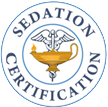A Position Statement on
Safe Medication Administration
Position Statement 9
American Society of PeriAnesthesia Nurses
The American Society of PeriAnesthesia Nurses (ASPAN) has a responsibility to define principles of safe, quality
nursing practice in the perianesthesia setting. ASPAN, therefore, has the responsibility to assist in defining and
supporting guidelines for the safe administration of medications within perianesthesia nursing practice .
Background
Healthcare today is riddled with issues associated with nursing staff shortages, utilization of temporary or agency staff,
challenging technological and scientific advances, and characteristics of a “drive-by” culture which include increased
volumes and complexities of same day surgeries as well as clinical fast tracking ..As a result, the following issues have
been identified:
1. ASPAN’s Clinical Practice Committee has received numerous inquiries related to the appropriateness of
perianesthesia nurses administering drugs typically classified as anesthetic agents (propofol, ketamine,
methohexital) for non-surgical situations ..While over the last few years these drugs have been used
in critical care settings for the purposes of sedation of the mechanically ventilated patient, they are
now being introduced for nursing staff to administer to provide sedation for short-term therapeutic,
diagnostic, or surgical procedures or as an adjuvant to antiemetic protocols .
2. The Joint Commission (TJC) publishes annual patient safety goals, which include recommendations for
improving the safe administration of medications ..A number of healthcare and consumer organizations
have also offered their endorsement of safer practice environments including the Agency for Healthcare
Research and Quality, the American Society of Health-System Pharmacists, the Institute for Safe
Medication Practices, and the National Quality Forum to name a few .
3. Medication use has always been extremely beneficial but always with risk .
4.In spite of any number of clinical practice safety measures, professional and personal accountability cannot
be eliminated .
Position
It is therefore the position of ASPAN that the perianesthesia nurse is responsible for providing the safe administration
of medications wherever perianesthesia care is delivered ..Guidelines for the safe administration of medications ought
to include the following principles:
1 . Patient safety is the highest priority .
2 . Perianesthesia registered nurses (RNs) are accountable for knowing their State Nurse Practice Act .
3 . Perianesthesia RNs are accountable for knowing ASPAN’s Practice Recommendation: The Role of the
Registered Nurse in the Management of Patients Undergoing Sedation for Short-Term, Therapeutic, Diagnostic or
Surgical Procedures .
4. Perianesthesia RNs are professionally accountable for having knowledge of any medications administered
to include indications, action, administration,side effects and treatment of untoward reactions ..This
includes maintaining core competencies within the scope of perianesthesia nursing practice ..“No one can
be expected to carry out a dangerous task safely for which he or she has not been trained .”1
5. Perianesthesia RNs are accountable for patient outcomes resulting from the administration of these agents ..
This accountability includes the reporting of clinical trends as outlined by the facility’s process .
6. Perianesthesia RNs are responsible to know and implement facility policies related to the administration of
medications.
7. Written medication guidelines should be the result of collaboration between physicians, pharmacists and
nurses and should be evidence-based ..These guidelines should include, but not be limited to, the following
accreditation requirements:
a. Abbreviations and symbols should be standardized .
b. Patient identification processes must include at least two identifiers .
c. High-alert medications can easily be identified within the facility .
d. Whenever in use, intravenous infusion pumps include free-flow protection devices .
e. Appropriate communication resources are practiced concerning patient allergy and drug reaction history .
f. Perianesthesia nurses can readily access updated pharmacological references as well as timely education
to introduce new medications .
g. Work environments restrict unnecessary noise and distractions from the medication preparation area .
h. Follow recommended national patient safety goals regarding verbal and telephone order.
Expected Outcomes
Perianesthesia nurses need to familiarize themselves with this position statement and inform and educate peers, nurse
managers, hospital administrators and physicians .
Collaborative and multidisciplinary efforts must be made to define and implement safe medication administration
guidelines wherever perianesthesia nurses provide care .
ASPAN as the voice of perianesthesia nursing practice must externalize this information by sharing this position
statement with regulatory agencies and other related professional organizations.
Approval of Statement
This statement was recommended by a vote of the ASPAN Board of Directors on April 17, 2004, in Philadelphia,
Pennsylvania, and approved by a vote of the ASPAN Representative Assembly on April 18, 2004, in Philadelphia,
Pennsylvania .
This position statement was reviewed and updated at the October 2009 meeting of the Standards and Guidelines
Committee in Batesville, Indiana.
REFERENCE
1. Pharmacy – nursing shared vision for safe medication use in hospitals: executive session summary Am J Health-Syst Pharm May 15,
2003. Available at: http://www .medscape .com/viewarticle/455700. Accessed February 1, 2010.
BIBLIOGRAPHY
Agency for Healthcare Research and Quality ..The National Quality Forum-Safe Practices for Better Healthcare ..Available at: http://www .
ahrq .gov/qual/nqfpract .pdf ..Accessed February 1, 2010 ..
Agency for Healthcare Research and Quality ..Tools for Patient Safety ..Available at: http://www .ahrq .gov/qual/pstools .htm ..Accessed
February 1, 2010 ..
ASA Statement on the Safe Use of Propofol ..Available at: http://www .asahq .org/publicationsAndServices/standards/37 .pdf ..Accessed
February 1, 2010 ..
Cohen MR, ed ..Medication Errors . Washington, DC: American Pharmacists Association; 2007 ..
Institute for Safe Medication Practices ..Organizations Release New Tools For Reducing Medication Errors ..Available at: http://www .ismp .
org/Tools/pathways .asp ..Accessed February 1, 2010 ..
Institute of Medicine ..Preventing Medication Errors: Quality Chasm Series . Washington, DC: National Academies Press; 2007 .
The Joint Commission ..2009 National Patient Safety Goals ..Available at http://www .jointcommission .org/PatientSafety/
NationalPatientSafetyGoals ..Accessed February 1, 2010 ..
U .S ..Pharmacopeia .Medication Errors in Post Anesthesia Care Units ..Available at: http://www .usp .org/hqi/patientSafety/resources/posters/
posterPostAnesthesiaCU .html ..Accessed February 1, 2010
